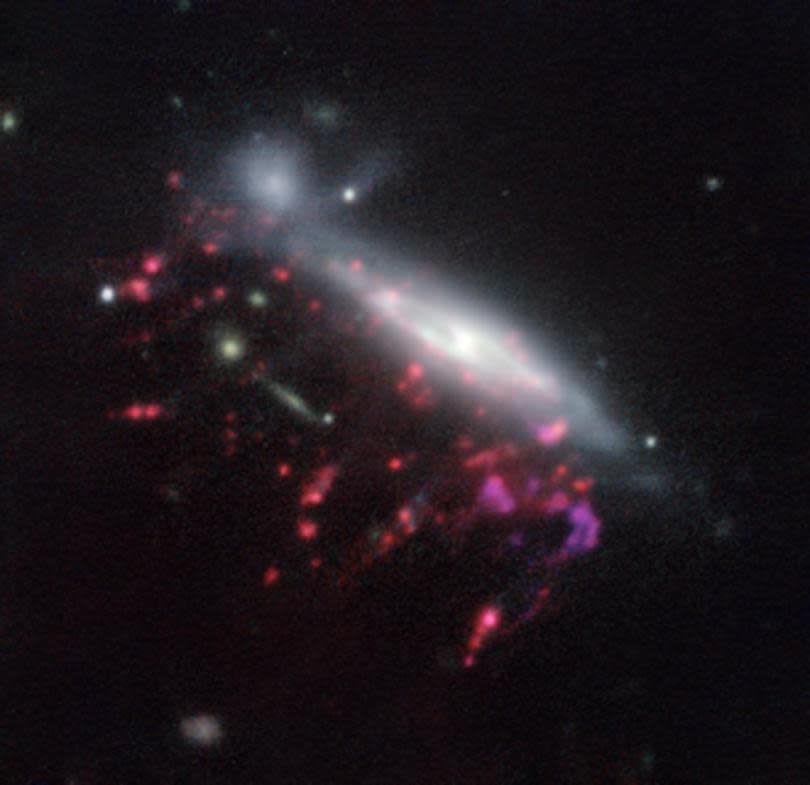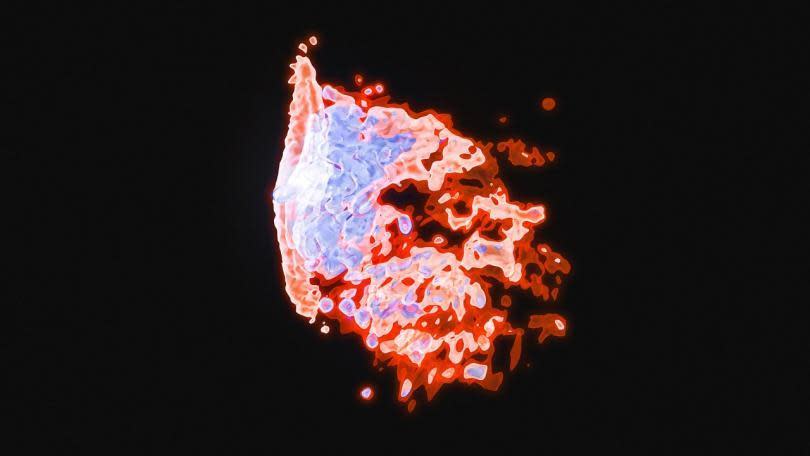Supermassive Black Holes In Jellyfish Galaxies Are Hungry
Hungry supermassive black holes are powering galaxies shaped like jellyfish, astronomers have found, and the information might offer more clues about how the universe formed.
Scientists using the European Southern Observatory’s Very Large Telescope in Chile spotted active supermassive black holes at the centers of six galaxies with tentacle-shaped arms of material reaching out of their disks for thousands of light years, called jellyfish galaxies. Those black holes were gobbling up material, the ESO said.
What made the observation so special was that the team had only been looking at seven of those galaxies all together — the high proportion of active supermassive black holes within them was unexpected because they are usually only found in a small number. Among the total galaxies in the universe, typically scientists will find such an active black hole at fewer than one in every 10, even though these superdense space monsters lie at the center of most galaxies.

Jellyfish galaxies like JO204, above, got their name from the long tentacles of material stretching out of their disks. The same process that blows a galaxy’s material in that shape might switch on the supermassive black hole at its center. Photo: ESO/GASP collaboration
A jellyfish galaxy is formed when it falls into a cluster of galaxies and the hot, thick gas in that cluster behaves like a wind and blows material around, creating the tentacles. It’s a process called ram pressure stripping because it strips that material out of the disk to form the tentacle shape.
It turns out that the very same thing shaping the tentacles of the jellyfish could be what keeps their supermassive black holes active. The ram pressure stripping may be “causing gas to flow toward the center and triggering the activity,” the scientists said in a study in the journal Nature.
While the supermassive black holes are active, they shine brightly.
Understanding how the universe feeds black holes could explain why some are active and others are not.
“This strong link between ram pressure stripping and active black holes was not predicted and has never been reported before,” team leader Bianca Poggianti, from Italy’s INAF-Astronomical Observatory of Padova, said in the ESO statement. “It seems that the central black hole is being fed because some of the gas, rather than being removed, reaches the galaxy center.”
The information offers insight into an important space relationship.
“It provides a new piece in the puzzle of the poorly understood connections between supermassive black holes and their host galaxies,” researcher Yara Jaffé said in the statement.
The scientists are continuing to study jellyfish galaxies, including to find out how many others are going through similar processes as they fall into galaxy clusters.
“A long-standing puzzle in astronomy has been to understand how galaxies form and change in our expanding and evolving universe,” Poggianti said. “Jellyfish galaxies are a key to understanding galaxy evolution, as they are galaxies caught in the middle of a dramatic transformation.”

Scientists have found active supermassive black holes at the centers of an unexpected number of jellyfish galaxies, which have tentacle-shaped arms of material reaching out of their disks. Photo: ESO
Related Articles


